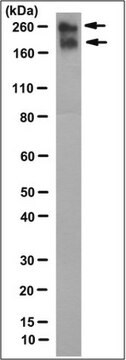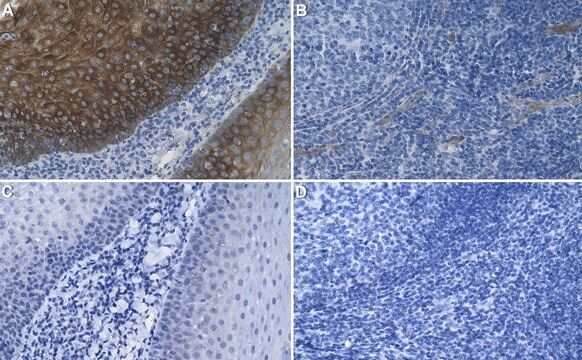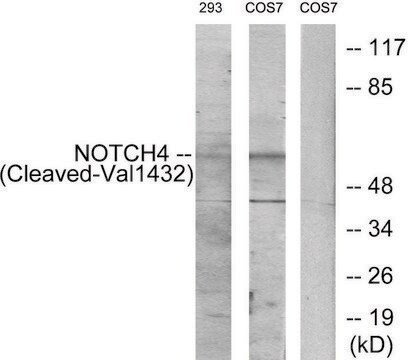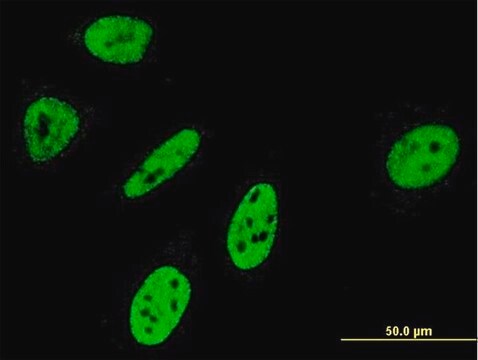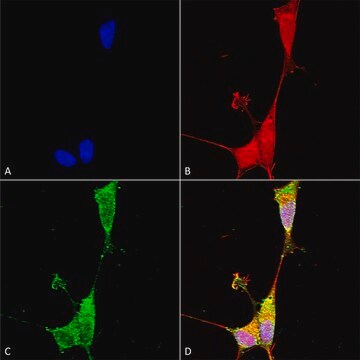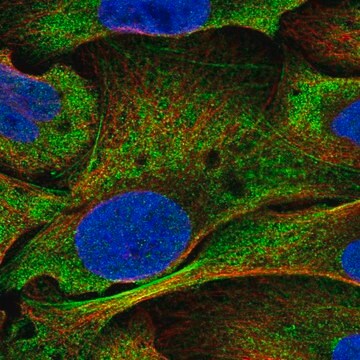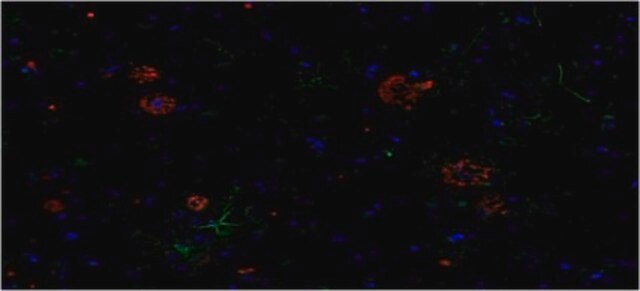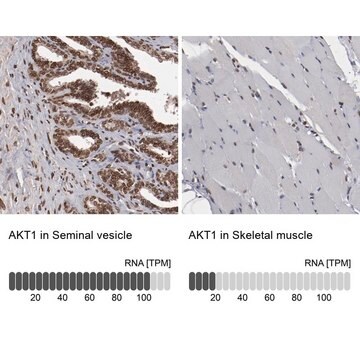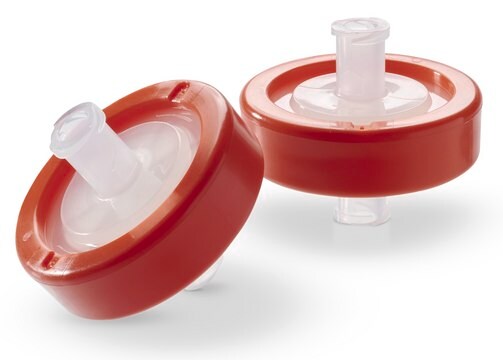MABF937
Anti-Notch 3 Antibody, ECD, clone 2G8
clone 2G8, from rat
Sinonimo/i:
Neurogenic locus notch homolog protein 3, Notch 3, Notch homolog 3, Notch 3 ECD
About This Item
Prodotti consigliati
Origine biologica
rat
Livello qualitativo
Forma dell’anticorpo
purified immunoglobulin
Tipo di anticorpo
primary antibodies
Clone
2G8, monoclonal
Reattività contro le specie
human
tecniche
immunofluorescence: suitable
immunohistochemistry: suitable (paraffin)
western blot: suitable
Isotipo
IgG2aκ
N° accesso NCBI
N° accesso UniProt
Condizioni di spedizione
wet ice
modifica post-traduzionali bersaglio
unmodified
Descrizione generale
Specificità
Immunogeno
Applicazioni
Immunohistochemistry Analysis: A representative lot detected the aggregated Notch 3 extracellular domain (ECD) deposits in brain blood vessels of CADASIL patients by immunohistochemistry staining of paraformaldehyde-fixed, paraffin-embedded brain tissue sections (Kast, J., et al. (2014). Acta Neuropathol. Commun. 2:96).
Immunofluorescence Analysis: A representative lot detected the aggregated Notch 3 extracellular domain (ECD) deposits in brain blood vessels of CADASIL patients by fluorescent immunohistochemistry staining of paraformaldehyde-fixed frozen brain tissue sections. The Notch3-EDC immunoreactivity was seen co-localized with that of LTBP-1, but not fibrillin-1 (Kast, J., et al. (2014). Acta Neuropathol. Commun. 2:96).
Western Blotting Analysis: A representative lot detected an elevated accumulation of aggregated Notch 3 extracellular domain (ECD) in brain blood vessel extracts from CADASIL patients when comparing to vessel extracts from non-diseased brains (Kast, J., et al. (2014). Acta Neuropathol. Commun. 2:96).
Inflammation & Immunology
Nervous System
Qualità
Isotyping Analysis: The identity of this monoclonal antibody is confirmed by isotyping test to be IgG2aκ.
Descrizione del bersaglio
Stato fisico
Stoccaggio e stabilità
Altre note
Esclusione di responsabilità
Non trovi il prodotto giusto?
Prova il nostro Motore di ricerca dei prodotti.
Codice della classe di stoccaggio
12 - Non Combustible Liquids
Classe di pericolosità dell'acqua (WGK)
WGK 1
Punto d’infiammabilità (°F)
Not applicable
Punto d’infiammabilità (°C)
Not applicable
Certificati d'analisi (COA)
Cerca il Certificati d'analisi (COA) digitando il numero di lotto/batch corrispondente. I numeri di lotto o di batch sono stampati sull'etichetta dei prodotti dopo la parola ‘Lotto’ o ‘Batch’.
Possiedi già questo prodotto?
I documenti relativi ai prodotti acquistati recentemente sono disponibili nell’Archivio dei documenti.
Il team dei nostri ricercatori vanta grande esperienza in tutte le aree della ricerca quali Life Science, scienza dei materiali, sintesi chimica, cromatografia, discipline analitiche, ecc..
Contatta l'Assistenza Tecnica.